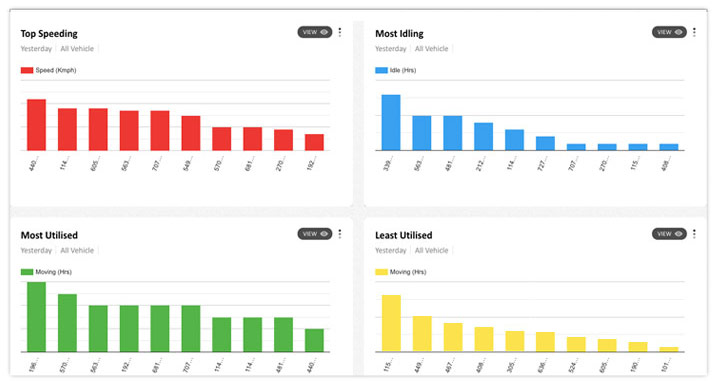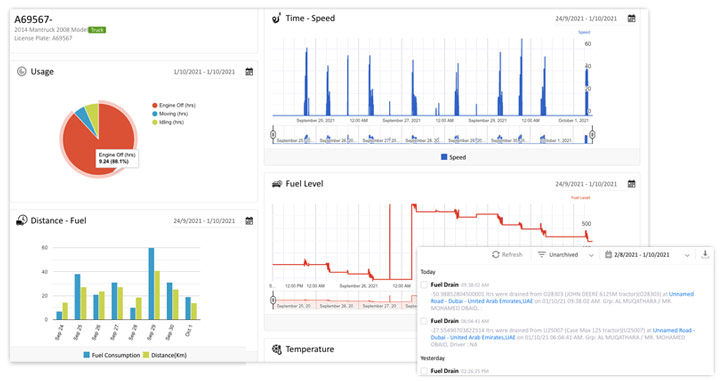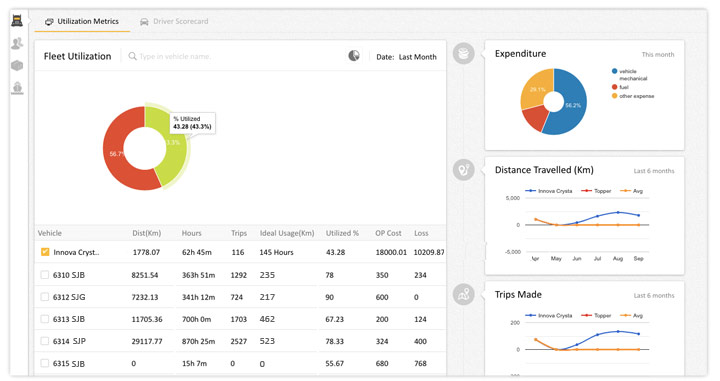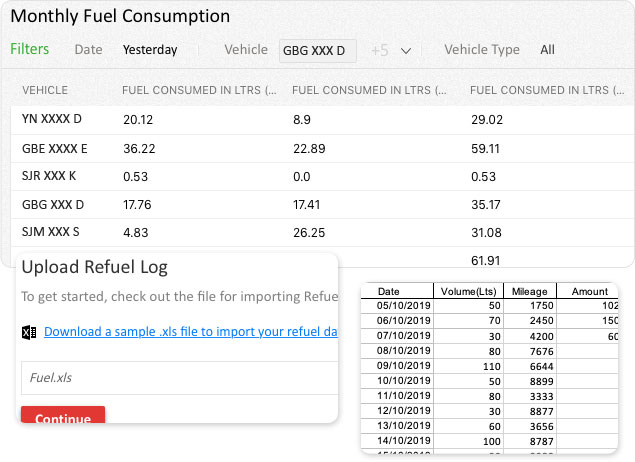As technology becomes highly advanced and less expensive, more and more businesses are implementing telematics for their daily operations.
Should your business use telematics metrics for your business? The answer is “Yes”,
because, latest studies reveal that telematics analytics can help you grow your revenue multiple times.
The process of backing up your assumptions with telematics analytics can help you get a better insight on the areas of growth or improvement you may be overlooking.
Telematics analytics also help to improve a company’s internal processes while driving down costs and improving profitability.
In short, telematics data analytics lets you summarise all information related to Fleet Utilisation and you can be sure that your fleets are utilised in the best way possible.
Let’s discuss the best 5 ways telematics data and analytics can grow your revenue.
1. Better insights to grow your business
Uncovering the value in your data is easier said than done. In most cases, obvious opportunities can be actioned quickly, more often, in depth analysis is needed to develop a keener understanding of the “why” behind your data.

A deeper dive is necessary to initiate a plan of action to address key challenges or enable great opportunities. And a better insight of the real problems helps to fasten your plan of action in each step of the decision-making process.
Depending on your goals and plans, using fleet analytics can help you discover opportunities to reduce costs, improve efficiencies and drive productivity in various areas of your business operations.
Insights from telematics data analytics can help your business:
- Identify the real issues
- Understand the areas of improvement
- Tie up loose ends in your operations
- Improve an organization’s internal processes and
- Increase productivity
2. An effective cost management method to follow
Telematics data can help you understand all financial aspects of fleet management and lets you implement an effective cost management method.

Telematics data provide information on
- Where and how money is being spent and
- Areas where it needs to be reduced
Real-time data lets you analyse the actual cost involved and if you don’t monitor spending, you could be racking up bills that you don’t actually need to.
And when we say effective cost management, it is not only about cutting cost, rather cost management is the process of utilising the available resources in the best possible manner.
Telematics data analytics lets you understand the actual cost involved in fleet management and helps you create programs to keep expenses at a minimum when surprises happen.
Implementing an effective cost management method can provide you a road map to business success.
3. Prevent theft
One of the major advantages of telematics data is that it helps you prevent theft by providing real time information on how, when and where the vehicle was in operation.
Telematics data include time stamped location details that provide information on the route, stoppage, idling time etc., that are made while the fleet is completing a trip. This information lets you identify long duration stoppages or expected halt vs unexpected stoppages, which can hint you on a possible theft of the assets in transit, or any fuel theft or pilferage.
Telematics data may include information on fuel viz.,
- Refuelled quantity
- Refuelled date, time and location
- Fuel drain
- Actual fuel usage etc.,

Analysing the above information pertaining to a fleet’s fuel usage can help you understand the actual fuel cost, any mismatch in actual fuel usage and the fuel bills.
4. Cut down operational cost
A proper analysis of the telematics data pertaining to usage of your fleets can help you have a better understanding of the total operational cost involved.
For instance, a parked fleet can only result in cost and an empty running fleet does not generate any revenue. Improving your fleet utilisation can help you reduce operational cost and increase revenue potential with fewer resources.
Once you identify which fleets are properly utilised, who (driver) has risky driving behaviour etc., you are on the right track because these are the areas of your concern that lead to unexpected operational costs.

As we all know, a major part of the unexpected cost is incurred due to accidents. We can put an end to this if we can identify the real “culprits”, here the drivers.
An improper usage of a vehicle can lead to:
- Unexpected service and maintenance cost,
- Increased insurance premium
- Penalty for traffic violations etc.,
So it is crucial to instantly have all the information pertaining to your fleets because, having a control of your fleet’s safety performance can help you reduce risk, reduce fines and insurance premium(by enjoying substantial insurance incentives), minimise accidents and keep your organisation operating at peak efficiency.
5. Improve Fleet Utilisation
Any company can incur a huge loss if its assets are not utilised in the best possible manner. To achieve this, the first thing to analyse is if telematics metrics provide you a positive picture on fleet utilisation.

If metrics provide you a positive picture, well and good; you are on the right track, if not, you have to be little concerned with the way your fleets are being utilised.
Implementing a few things can easily help you optimize fleet utilisation and achieve the desired results.
Pre-plan your fleet’s route: Optimise routes and plan schedules more accurately can help to reduce travel time distance and unnecessary wear and tear of your fleets, meaning, reduced travel time can increase the number of trips a fleet can handle.
Pre-trip walkarounds: Pre-journey walkarounds are vital especially for fleets that ply on long distance routes.
Things like fluid level, tyre pressure, breaks, wipers etc., should be checked thoroughly
before starting a trip. Neglecting things like this could result in unexpected vehicle downtime or even an accident.
Monitor driver performance: Keeping a watch on your driver’s performance or driving habit ensures that they are driving efficiently and adhering to traffic rules.
Harsh acceleration, sudden braking, over speeding and other bad driving habits could result in excessive fuel usage and can be a possible cause of vehicle damage.
Proper utilisation of fleet not only increases productivity and reduces operational costs; but also boosts profitability.

